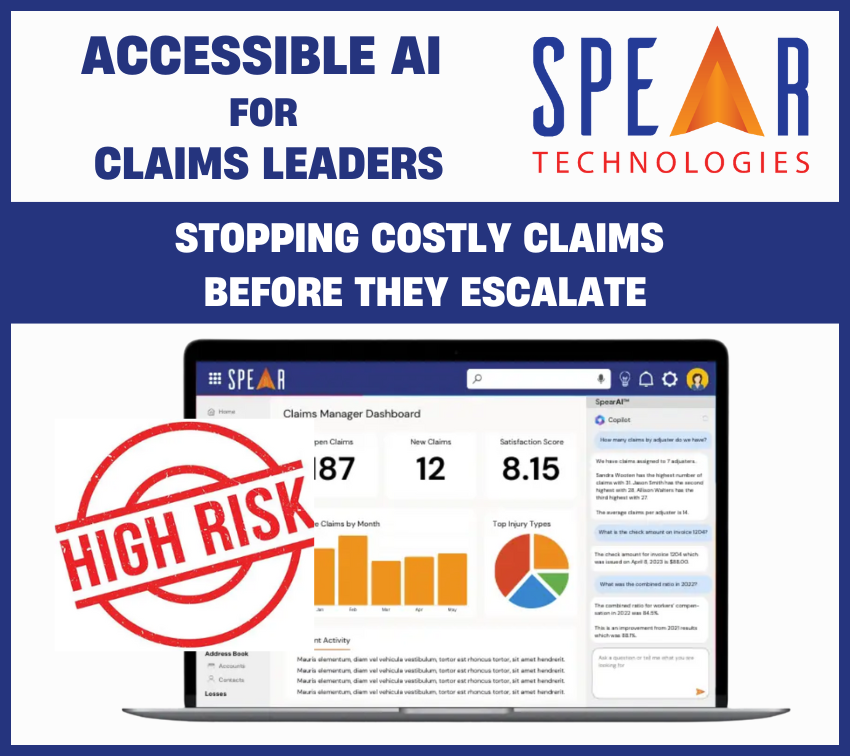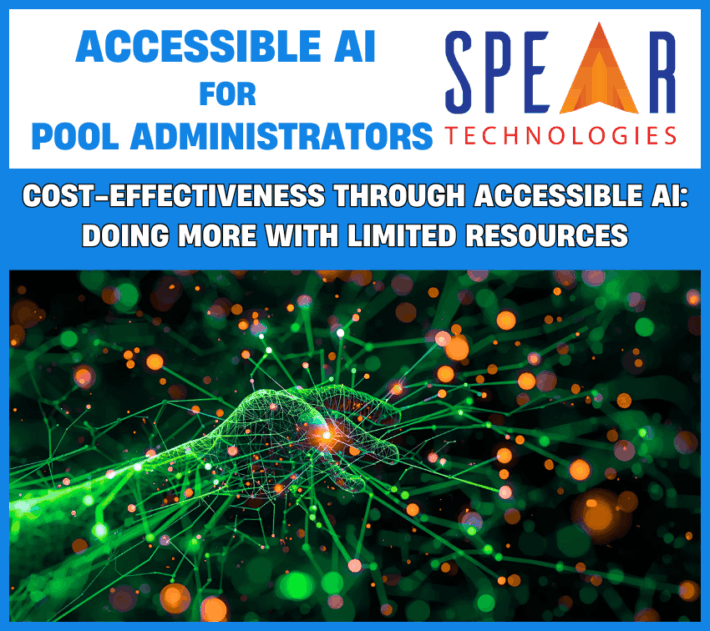Accessible AI for Claims Leaders: Stopping Costly Claims Before They Escalate

For claims executives, controlling costs and reducing litigation often comes down to one critical factor: how early you identify and manage high-risk claims. Left unchecked, these claims spiral quickly, driving up severity, prolonging resolution, and consuming disproportionate resources.
And make no mistake – the stakes are high.
Consider the costs of high-risk claims by Line of Business:
- Property: A single catastrophic event recently cost insurers over $100 billion—and these incidents have increased by 40% in recent years.
- Healthcare: Escalation drove more than $18 billion in claims costs in 2023 alone.
- Worker’s Compensation: The average large claim now exceeds $3 million.
- Commercial Auto: Claim costs are up $30 billion over the past decade, fueled by higher bodily injury payouts, escalating litigation, and pricier vehicle repairs tied to advanced technology.
With stakes this high, claims leaders can no longer afford to wait until problems surface. This is where Accessible AI changes the game, empowering teams to identify high-risk claims earlier, intervene faster, and prevent escalation before costs spiral out of control.
In the first article of this series, Driving Visibility, Transparency, and Better Outcomes, we explored how Accessible AI equips claims leaders with the oversight and agility required in today’s environment. In this installment, we take a deeper look at one of the highest-value applications: Proactive High-Risk Claim Management.
Why High-Risk Claim Management Matters More Than Ever
High-risk claims can arise from multiple factors:
- Complex medical treatments and compounding injuries
- Claimants with litigation history or attorney representation
- Fraudulent patterns that don’t surface in standard reviews
- Delayed interventions that allow severity to escalate
Traditional claims systems rarely provide timely alerts. Too often, leaders only recognize a problem once costs are entrenched or litigation has begun. This reactive approach drives unnecessary expense and increases scrutiny on claims performance.
Accessible AI changes the equation by surfacing these risks earlier, giving executives and adjusters the opportunity to act before red flags turn into runaway costs.
Empowering Business Users with AI They Can Shape
Before diving deeper into high-risk claim management, it’s important to revisit the foundation of Accessible AI. At the core of every use case in this series—including early risk detection—is the idea that AI must be usable and adaptable by business leaders themselves. If you’ve read the first article, this will be a refresher. If you’re joining us here, it’s essential context.
One of the most transformative aspects of accessible AI in insurance is the shift from developer-led to business-led model interaction. In traditional setups, any customization or retraining of AI models requires intervention from IT teams, data scientists, or external vendors. This dependency creates bottlenecks, slows innovation, and disconnects model development from those who understand the business problems best—your underwriters, claims adjusters, fraud investigators, and customer experience teams.
Why Business-User Accessibility Is a Game-Changer
When AI tools are designed for business users, the result is more responsive, agile, and relevant model development. Empowering business users to adapt and train AI models on their own yields multiple advantages:
- Faster Time-to-Value: No waiting on IT backlogs or vendor response times
- Higher Accuracy: Models reflect real-world operational needs and are continually refined by domain experts
- Greater Adoption: Tools that align with existing workflows and skill sets see higher engagement
- Scalable Innovation: Business teams become active participants in digital transformation, not passive consumers
How Accessible AI Identifies High-Risk Claims
Accessible AI models draw from structured and unstructured data sources—including claim notes, claimant history, treatment progression, and external benchmarks. By analyzing these patterns, AI can:
- Flag claims likely to result in litigation
- Identify medical escalation risks earlier
- Detect claimants with repeat or suspicious patterns
- Predict when claims are likely to breach severity thresholds
Unlike traditional systems, these models are transparent and adaptable—business leaders can refine the signals, thresholds, and interventions without waiting on IT.
Acting Proactively: Intervening Before Escalation
Once high-risk claims are identified, leaders can:
- Reallocate resources to ensure stronger oversight
- Engage legal or SIU teams sooner to prevent runaway litigation costs
- Intervene with claimants directly to clarify expectations and build trust before attorneys get involved
- Ensure TPAs or partners follow escalation protocols with full accountability
This proactive playbook transforms oversight from reactive reporting to active risk prevention.
Case Study: Reducing Costs Through Early Intervention
A large regional claims organization recently implemented Accessible AI to strengthen its oversight process. Within the first six months:
- The system flagged high-risk claims an average of 45 days earlier than legacy methods.
- Claims flagged early had 20% lower severity on closure, driven by faster interventions.
- The litigation rate dropped by 15%, thanks to earlier engagement with claimants and attorneys.
While results will vary, the case underscores the financial and operational impact of catching risk before it spirals.
Why It Matters for Claims Leadership
For executives, the mandate is clear: deliver accountability, transparency, and better outcomes while managing finite resources. Proactive high-risk claim management powered by Accessible AI directly supports this mandate.
- Fewer surprises through earlier detection
- Lower litigation exposure through proactive engagement
- Reduced severity through timely intervention
- Improved oversight across TPAs and in-house teams
What’s Next in the Series
This article highlighted how Accessible AI helps leaders stop costly claims before they escalate. Next, we’ll explore how Virtual Agents for Vendor Interactions improve efficiency, transparency, and satisfaction without expanding staff.
Ready to see how SpearClaims™ can help your team do more with less?
Schedule a Demo to see how SpearClaims™ with accessible AI equips claims executives with greater transparency, visibility and proactive risk management.
Request Pricing to learn how surprisingly affordable it is to modernize operations, manage costs, and deliver better outcomes.



